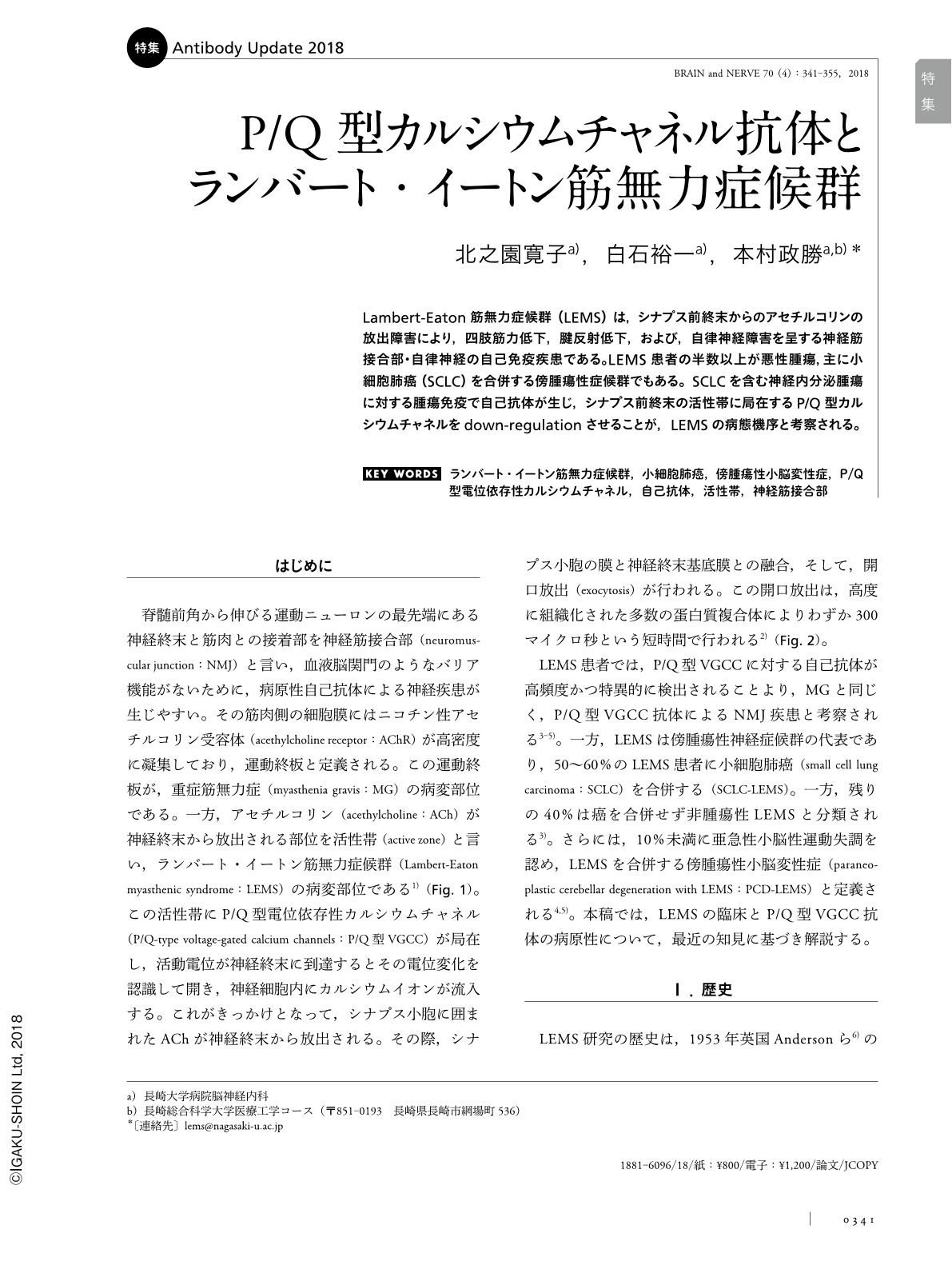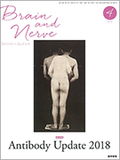Japanese
English
- 有料閲覧
- Abstract 文献概要
- 1ページ目 Look Inside
- 参考文献 Reference
Lambert-Eaton筋無力症候群(LEMS)は,シナプス前終末からのアセチルコリンの放出障害により,四肢筋力低下,腱反射低下,および,自律神経障害を呈する神経筋接合部・自律神経の自己免疫疾患である。LEMS患者の半数以上が悪性腫瘍,主に小細胞肺癌(SCLC)を合併する傍腫瘍性症候群でもある。SCLCを含む神経内分泌腫瘍に対する腫瘍免疫で自己抗体が生じ,シナプス前終末の活性帯に局在するP/Q型カルシウムチャネルをdown-regulationさせることが,LEMSの病態機序と考察される。
Abstract
Lambert-Eaton myasthenic syndrome (LEMS) is an autoimmune disease of the neuromuscular junction. Approximately 50-60% of patients with LEMS have a tumor, most often small cell lung cancer (SCLC), making LEMS a paraneoplastic neurological syndrome. In Japan, the clinical picture is a male: female ratio of 3:1; mean age, 62 years (17-80 years); and 61% of LEMS patients have SCLC (SCLC-LEMS), with the remainder of patients having no cancer. Patients with LEMS develop a unique set of clinical characteristics, which include proximal muscle weakness, depressed tendon reflexes with post-tetanic potentiation, and autonomic symptoms. Interestingly, less than 10% of patients with LEMS have cerebellar ataxia (LEMS with paraneoplastic cerebellar degeneration). Considering its pathomechanisms, LEMS is a presynaptic disorder of neuromuscular transmission in which quantal release of acetylcholine is impaired by autoantibodies against P/Q-type voltage-gated calcium channels (P/Q-VGCCs) at active zones reducing quantal release of acetylcholine, although an animal model using immunization with purified P/Q-VGCCs has not yet been established. The diagnosis can be confirmed by finding a reduced compound muscle action potential amplitude that increases by over 60% following maximum voluntary activation or 50 Hz nerve stimulation. Approximately 90% of patients who satisfy the above electrophysiological diagnostic criteria are positive for P/Q-VGCC antibodies have their diagnosis confirmed. Specific tumor therapy in SCLC-LEMS will often improve the neurologic deficit. Tumor removal is the primary treatment for LEMS. If primary tumor screening is negative, screening should be repeated after 3-6 months, followed by screening every 6 months until 2 years post diagnosis. Most patients benefit from 3,4-diaminopyridine being administered with pyridostigmine. In those with severe weakness, high-dose intravenous gamma-globulin (IVIg) or plasmapheresis confers short-term benefits. Prednisone, alone or combined with immunosuppressive drugs, can achieve long-term control of the disorder. The results of a prospective cohort study showed that the presence of LEMS with SCLC had a significant survival advantage independent of other prognostic factors including disease extent, age, sex, performance status, and serum sodium values.

Copyright © 2018, Igaku-Shoin Ltd. All rights reserved.


